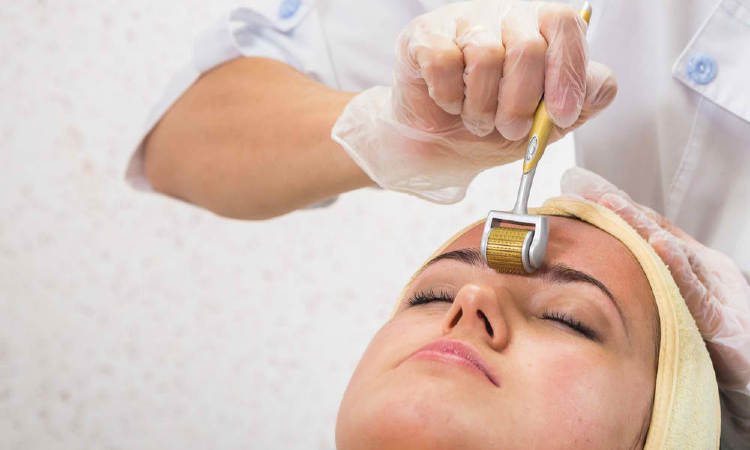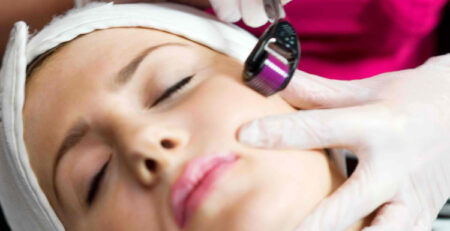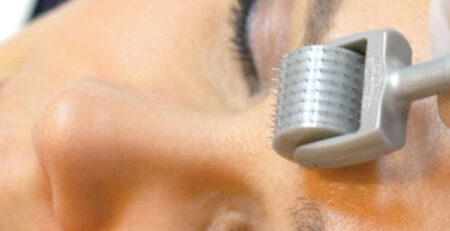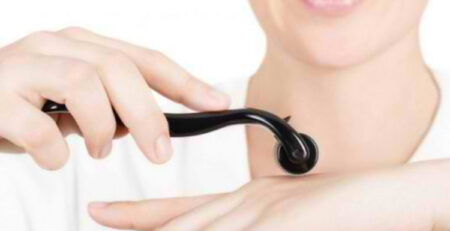Painless skin needling? How to have a pain-free derma rolling treatment?
Among the many skin care treatment, derma rolling therapy is probably the least painful, has lesser side-effect and few down time. If you had your derma rolling procedure, you may observe that there is some pinpoint bleeding. For some this causes milder pain while for others they can tolerate the pain and may not feel any pain at all. These pinpoint bleeding creates micro injury that stimulates the formation of new collagen and elastin.
The pores close spontaneously soon after the skin needling, so you will only feel transient pain, unlike in other skin care treatment wherein it aggressively peel the entire superficial or upper skin layer called epidermis. Usually, if you had this kind of treatment, you are obliged to stay at home for a few days and rest.
You cannot go out at home because the entire skin is reddish, inflamed and or peeling. So derma rolling treatment is definitely a good choice if you don’t want to experience that kind of pain.
If the treatment is done in an office-based procedure, you may have a painless treatment. This is because in the dermatologist clinic, they apply a topical anesthesia or numbing cream in the area, so you won’t feel any pain at all.
So, are you curious on how topical anesthesia is applied to the skin? Is there are any specific areas that are painful to treat? Or which is the area with the most number of pain receptors? Will pain killer help to alleviate the pain?
How topical anesthesia or numbing cream is applied using derma rolling treatment?
In derma rolling therapy or also known as collagen induction therapy, skin needling and micro needling treatment, the topical anesthesia is applied prior to the treatment procedure. For DIY treatment is suggested to follow the procedure as done in professional beauty clinics. Usually, most doctors used lidocaine and apply it in the area. But they could also use other topical anesthetic creams such as a mixture of lignocaine and prilocaine.
After applying the cream, the doctor will have to wait for few minutes usually around 30 to 45 minutes or so until the anesthesia is fully absorbed by the skin. This is commonly used for longer microneedles such as 1.5 mm and longer.
Afterwards, the derma rolling procedure will be performed. The patient will not feel any pain while the procedure is going on. Usually, the treatment will only take a few minutes depending on the extent of the area treated. You may need at least three derma rolling session before you can actually see the results.
In derma rolling therapy, there is an instrument used called derma roller, which is a simple, hand-held device consisting of a cylinder with hundreds of micro needles on it. The needle-studded cylinder is rolled in the skin for several times in multiple directions. It exerts a therapeutic effect by stimulating several pathways that would results to formation of new collagen and elastin.
The micro needles create pinpoint bleeding on the treated skin. It will take around two to three days before the redness, and inflammation will heal completely. Other than that, there are no other post treatment sequelae noted in most patients. In derma rolling treatment, you may need around four to eight weeks interval and multiple sessions before you can see the results.
Which area of the body produces more pain when it comes to skin needling?
The skin is a well-structured organ. It has different sensory receptor for various stimuli like pain, temperature, and so on. You will feel more pain in thinner areas of the skin because it is closest to the sensory receptors.
Thicker skin like the soles has also pain receptors, but when you pinprick it, the pain is not that much as compared to the face and lips. Thicker skin means it needs longer micro needles to exert an effect. Nevertheless, each person has their own idiosyncratic reaction when it comes to pain.
Other person can tolerate pain much longer while others cannot. For example, a woman who had a normal childbirth may be more tolerant to pain, than a woman who hasn’t given birth. The thing is determining which is more painful and which is not depends on the person’s tolerability when it comes to painful stimuli. Pain is a subjective feeling that is quite hard to quantify.
Can you use pain killer to reduce the pain in derma rolling?
If you want to make sure, and you think that the topical anesthesia is not enough, you can always take pain killers before you proceed with your derma rolling appointment. Make sure that you take it with a full stomach or you first eat your breakfast or lunch or dinner first. Pain killers like NSAIDs can cause stomach ulcer if you take it without any food in your stomach.
And also make sure that you do not have any allergic reactions to the drug so you won’t have any adverse reactions.
What other things you need to take note about micro needle length?
Shorter needle sizes like 0.2 mm produces no any pain. It is actually used to deliver topical serums, moisturizing creams, anti-aging creams and so on. It does not cause any pinpoint bleeding or redness.
Longer needle sizes like 1.5 mm are the ones that cause redness, some sort of inflammation, and pinpoint bleeding. The procedure is usually done in the dermatologist clinic because it penetrates deeply into the skin. Longer needles may reach up to the dermal layer.
When targeting this layer, the procedure should be followed by the book or else, it may cause permanent scarring.
Bottom-line
If you are not that tolerable to pain, using painkillers and numbing creams will surely help to make your derma rolling treatment painless. Again, different persons have different tolerability to pain. Some may find the treatment painful while others do not feel any pain at all.
Works cited
Li X1, Zhao R, Qin Z, Zhang J, Zhai S, Qiu Y, Gao Y, Xu B, Thomas SH. (2010). Microneedle pretreatment improves efficacy of cutaneous topical anesthesia. Am J Emerg Med. , 30-4.
Majid, I. (2009). Microneedling Therapy in Atrophic Facial Scars: An Objective Assessment. J Cutan Aesthet Surg. , 26–30.













